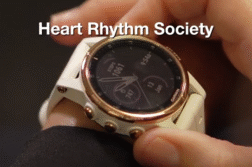BALTIMORE, Md. (Ivanhoe Newswire)— Ultrasound is an important medical tool that uses sound waves to produce images of structures inside the body, like a developing baby. But doctors also rely on ultrasound to see organs, muscles, or blood vessels. Now, a new system is providing even better pictures for doctors, helping guide them through the most delicate procedures. Resona 7
Adrienne Toby had big plans for retirement. More time with her grandkids and, after the pandemic, more travel! But about a year ago, Adrienne noticed changes in her neck.
“I had noticed for a couple years I had like a swollen gland, but it eventually got bigger,” Adrienne Toby recalled.
Adrienne’s doctor found what’s called a carotid body tumor.
“The tumor is in the bifurcation or forking of the artery. Tumor grows on the middle of it,” explained Kurtis Kim, MD, vascular surgeon at Mercy Medical Center in Baltimore.
“And it was wrapping itself around my artery,” shared Adrienne.
It wasn’t cancerous, but still needed to come out. Dr. Kim had a new tool to guide the delicate surgery. It’s called the Resona 7, an ultrasound system that produces images that are sharper than ever. Doctors and vascular technologists say it’s like going from watching something in standard definition television to ultra high-def. And …
“It enables us to see far deeper than ever before with a far greater clarity,” added Todd Hall, technical director at Mercy Vascular Labs in Baltimore.
Dr. Kim says his team is using the Resona 7 to find the cause of leg swelling and pain, poor circulation, and clots.
“Even finding small clots down in your leg that other ultrasound would not be able to see,” described Dr. Kim.
Adrienne’s surgery to remove the tumor was a success. She says she felt better almost immediately.
“Once I had the surgery, all my pain went away,” exclaimed Adrienne.
Technology that puts circulation problems in clear focus.
Dr. Kim also says the new ultrasound has a feature that allows doctors to measure arterial stiffness, which is a sign of aging and also a heart disease risk factor.
Contributors to this news report include: Cyndy McGrath, Executive & Field Producer; Kirk Manson, Videographer; Roque Correa, Editor.
To receive a free weekly e-mail on Medical Breakthroughs from Ivanhoe, sign up at: http://www.ivanhoe.com/ftk
MEDICAL BREAKTHROUGHS
RESEARCH SUMMARY
TOPIC: DOCS SEE DEEPER WITH NEW ULTRASOUND: RESONA 7
REPORT: MB #4869
BACKGROUND: Vascular ultrasound is a ultrasound method, performed without the use of needle, dyes, radiation, or anesthesia, used to study the blood circulation in the arms and legs.
During a vascular ultrasound, sound waves are transmitted through the tissues of the area and reflect off blood cells that are moving within the blood vessels. The sound waves are then recorded and displayed on a computer screen which allows the reading physician to calculate their speed. Ultrasounds takes approximately 30 to 90 minutes to complete and are used to evaluate the blood flow to specific organs in a person’s body such as but not limited to in the arteries in the neck that supply blood to the brain, to a newly transplanted organ, or in the arteries to detect the presence, severity and specific location of a narrowed area of the arteries.
(Source: https://my.clevelandclinic.org/health/diagnostics/17606-vascular-ultrasound)
DIAGNOSING: Current benefits of being examined by an ultrasound include: the machine imaging is safe and does not use radiation, gives a clear picture of soft tissues that do not show up as well on x-ray images, and machines are widely available, easy to use and are less expensive than most other ways of collecting images. Most ultrasound exams are painless, fast and are easily tolerated. Once a person being screened by an ultrasound is positioned on an examination table, a radiologist or sonographer will apply some warm water-based gel to the skin and then place a transducer firmly on the body, moving it back and forth over the area of interest until the desired images are captured. Once the images are captured the ultrasound gel will be wiped off the skin and normal activities should be able to be resumed immediately.
(Source: https://www.radiologyinfo.org/en/info.cfm?pg=vascularus)
NEW TECHNOLOGY: Ultrasound imaging technology continues to improve dramatically as over the last decade images from the machines are becoming clearer and more defined. Real-time computer imaging has helped increase processing speeds, and as a result better images are able to be produced. Having higher image quality improves the rate of diagnostic accuracy, which can allow doctors to better attend to the needs of their patients.
(Source: https://www.pbmchealth.org/news-events/blog/latest-advancements-ultrasound-imaging-technology)
FOR MORE INFORMATION ON THIS REPORT, PLEASE CONTACT:
DAN COLLINS
410-332-9714
If this story or any other Ivanhoe story has impacted your life or prompted you or someone you know to seek or change treatments, please let us know by contacting Marjorie Bekaert Thomas at mthomas@ivanhoe.com




